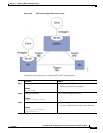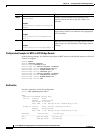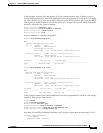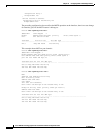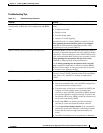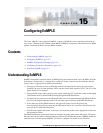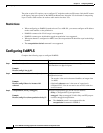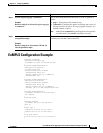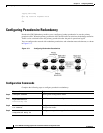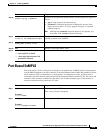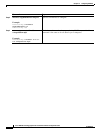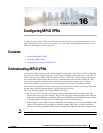
CHAPTER
15-1
Cisco ASR 901 Series Aggregation Services Router Software Configuration Guide
OL-23826-09
15
Configuring EoMPLS
The Cisco ASR 901 router supports EoMPLS, a subset of AToM that uses a tunneling mechanism to
carry Layer 2 Ethernet traffic. Ethernet Over MPLS (EoMPLS) encapsulates Ethernet frames in MPLS
packets and forwards them across the MPLS network.
Contents
• Understanding EoMPLS, page 15-1
• Configuring EoMPLS, page 15-2
• EoMPLS Configuration Example, page 15-3
• Configuring Pseudowire Redundancy, page 15-4
• Port Based EoMPLS, page 15-5
Understanding EoMPLS
EoMPLS encapsulates ethernet frames in MPLS packets and forwards them across the MPLS network.
Each frame is transported as a single packet, and the PE routers connected to the backbone add and
remove labels as appropriate for packet encapsulation:
• The ingress PE router receives an Ethernet frame and encapsulates the packet by removing the
preamble, the start of frame delimiter (SFD), and the frame check sequence (FCS). The rest of the
packet header is not changed.
• The ingress PE router adds a point-to-point virtual connection (VC) label and a label switched path
(LSP) tunnel label for normal MPLS routing through the MPLS backbone.
• The network core routers use the LSP tunnel label to move the packet through the MPLS backbone
and do not distinguish Ethernet traffic from any other types of packets in the MPLS backbone.
• At the other end of the MPLS backbone, the egress PE router receives the packet and
de-encapsulates the packet by removing the LSP tunnel label if one is present. The PE router also
removes the VC label from the packet.
• The PE router updates the header, if necessary, and sends the packet out the appropriate interface to
the destination switch.
The MPLS backbone uses the tunnel labels to transport the packet between the PE routers. The egress
PE router uses the VC label to select the outgoing interface for the Ethernet packet. EoMPLS tunnels are
unidirectional; for bidirectional EoMPLS, you need to configure one tunnel in each direction.



